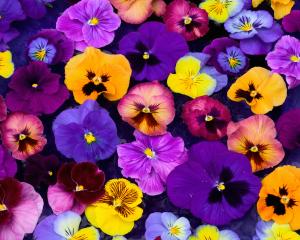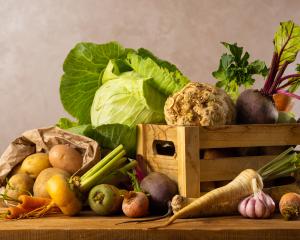First it was vegetables, now it's fruit as more people learn the delight of growing their own.
We've been eating apples for thousands of years, but one who probably didn't eat an apple was Eve.
The biblical word is a generic one for fruit and Eve was more likely to have been nibbling a fig or pomegranate than the tiny bitter apples that existed when the book of Genesis was written about 12,000 years ago.
Because apples do not grow true from seed, without grafting and budding techniques, every apple would be a unique variety.
Grafting was first recorded in Rome in the 2nd century BC.
Because 80% of New Zealand's commercial apple crop is exported, the varieties grown are determined by overseas customers' preferences.
This means many excellent apples have fallen by the wayside but can still be grown at home.
Old varieties - such as Peasgood Nonsuch, Calville Blanc D'Hiver and Reinette du Canada - are sold as "heritage" apples.
No matter how little space you have, there is almost certainly room for at least one fruit tree. Ballerina apples grow to no more than 1.5m and about 30cm wide, making them ideal for pots.
Multigrafted apple trees, with two or three varieties on one stem, are another option where space is limited.
No-one has yet produced a dwarf pear, and to make matters worse, to produce fruit, most pears need to be grown near a compatible variety as a pollinator.
An exception is self-fertile Conference, but its crop will be improved if grown with Red Bartlett or Winter Cole.
Garden centres keep lists of pollinators and you can buy multigrafted trees, including a treble of Conference and Doyenne du Comice pears with a quince.
Whatever you choose, Nathan Milne, of Ashburton's Allenton Nurseries, says you should prepare the ground by digging a good-sized hole, wider than the spread of the tree's roots.
Pears don't mind being somewhat damp but apples hate wet feet and can die without adequate drainage.
Put 150g of gypsum in the bottom of the hole to help break up clay soil and give the tree calcium, add blood and bone plus some general fertiliser such as Nitrophoska Blue, then a good layer of soil so the roots will not burn by coming into direct contact with the plant foods.
If the site is windy, put in a stake before planting and tie the tree to the support with rubber ties.
"Never use wire or you will ringbark the tree," Milne says.
• Tip
Know someone with a quince tree and want one yourself? Quinces grow readily from cuttings taken now but the downside is the several years' wait before you get fruit.
• Rootstocks
Almost every fruit tree in garden centres is budded or grafted on to rootstock, a compatible variety or species that usually grows better than the chosen variety.
For example, apricot scions (cuttings) are often grafted on to peach stock; pears can be grown on quince stock to keep the tree size in check.
Five rootstocks are in general use for apples: M9 is used to create semi-dwarf trees that will be about 3m tall when mature; M106 reaches 4.5m, as does M116, which is recommended for heavy or clay soils; M27 is a super-dwarf, growing just 1m to 1.5m; while M793, which does well on clay soils, will top 6m.
• Some common pests and diseases in pipfruit
Codling moth loves apples and also targets pears. Pheromone traps, available at garden centres, are most effective but rags dipped in oil (not engine oil) wrapped around the tree trunks in December will help capture the bugs.
Black spot on apples, pears and quinces, and on their leaves, is best controlled by good orchard hygiene - always collecting and gathering leaves on the ground below infected trees - and by spraying.
Brown flesh in apples can be treated by giving each apple tree 150g gypsum, worked into the soil well out from the tree trunk.
Powdery mildew, often seen if humidity is high, is prevented by spraying.
Heritage russet apples, with rough brown areas of skin, are recognised as being the most disease-resistant.
In apples that do not normally show russetting, its presence can indicate disease.













